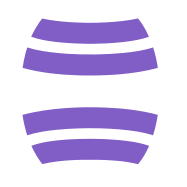Ethereum has single-handedly altered the landscape of the internet and finances by introducing the concept of ‘smart contracts.’ As the backbone for a good portion of Web3 protocols, Ethereum’s blockchain serves multiple purposes – from hosting decentralized applications (dApps) to minting countless tokens and facilitating complicated financial transactions without intermediaries. In this post, we will explore Ethereum’s protocol, dissect its components, and understand why it’s often referred to as the world’s programmable blockchain.
Introduction
The inception of Ethereum marked a transition from the original vision of blockchain as merely a ledger for Bitcoin transactions to a more expansive ecosystem that supports various decentralized functions and programs. Proposed by Vitalik Buterin in late 2013 and developed by a team of blockchain enthusiasts, Ethereum presented a new use case for blockchain technology. Unlike Bitcoin, Ethereum is not just a currency but an entire platform where developers can create and deploy smart contracts and dApps.
Body
The Technology Behind Ethereum
At its core, Ethereum is a decentralized, open-source blockchain system. It operates using the proof of work (PoW) consensus mechanism, although it plans to transition to proof of stake (PoS) with its upcoming Ethereum 2.0 update. This transition is aimed at making the blockchain more scalable, secure, and sustainable.
Smart Contracts
Smart contracts are self-executing contracts with the agreement terms directly written into lines of code. These contracts run on the Ethereum blockchain and automatically execute transactions if certain conditions are met, without the need for an intermediary. This not only cuts down on time and expenses but also reduces the potential for human error or fraud.
Ethereum Virtual Machine
The Ethereum Virtual Machine (EVM) is a powerful component of the Ethereum protocol. It’s essentially a global, decentralized computer made up by thousands of connected computers (nodes) running the Ethereum software. The EVM compiles and executes smart contracts, ensuring security and providing isolated environments for each contract.
The Ether Token
Ether (ETH) is the native cryptocurrency of the Ethereum platform. It is used to compensate nodes for computations performed and to prevent spam on the network. Aside from being an investment asset, ETH is used as ‘gas’ to power transactions and smart contract executions.
Decentralized Applications (dApps)
Based on the Ethereum protocol, dApps are applications that run on a peer-to-peer network of computers instead of a single computer. They are developed using Ethereum’s smart contracts. The decentralized nature of these apps makes them immune to censorship, downtime, and fraud. Some of the most popular dApps include financial tools, games, and decentralized exchanges (DEXs).
Decentralized Autonomous Organizations (DAOs)
Powered by the Ethereum protocol, DAOs are entities that run without any central leadership. Decisions are made from the bottom up, governed by a community organized around a specific set of rules enforced on the blockchain. DAOs epitomize the democratic ethos of Ethereum by giving power directly to the people involved.
Tokens and ERC Standards
Ethereum also incorporates several token standards, such as ERC-20 for fungible tokens and ERC-721 for non-fungible tokens (NFTs), which have grown in popularity for various use-cases including art, gaming, and collectibles.
Conclusion
Ethereum’s protocol has ignited a revolution in the way we think about financial systems, contracts, and online interactions. Its ability to execute smart contracts has paved the way for decentralized finance (DeFi), NFTs, and a myriad of other applications that are only beginning to unfold their potential. While it still has challenges like scalability and energy consumption, the upcoming Ethereum 2.0 upgrade promises to address many of these issues.
As Web3 continues to unfold, Ethereum stands as a critical protocol in the growing ecosystem of decentralized technology, combining programmability with security and decentralization. It’s a space where traditional boundaries of control and intermediation are disrupted, giving rise to new forms of conducting transactions and building community-owned systems and structures. Whether or not Ethereum will maintain its position as the queen of smart contracts remains to be seen, but its revolutionary impact on the tech landscape is indelible.

